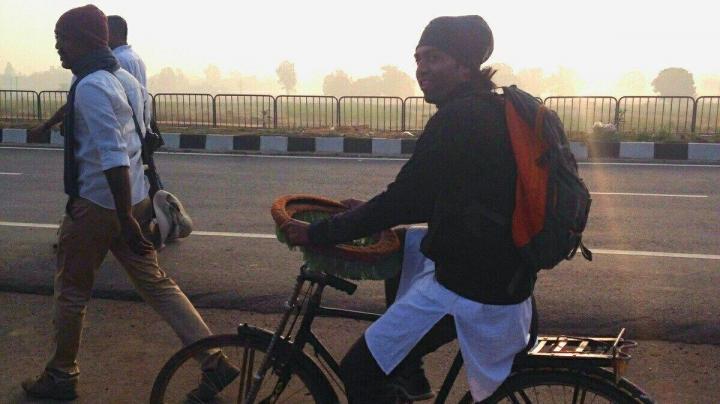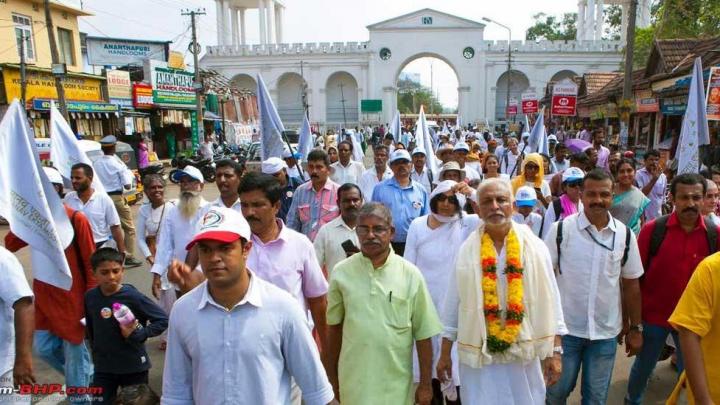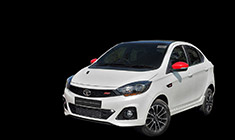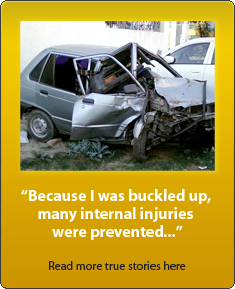News
Walk of Hope: 7.5K km from Kanyakumari to Kashmir on foot in 1.5 years
This yatra was conceived as a walk through India to spread harmony amongst the different people and religions we have in the country.
BHPian Red Liner recently shared this with other enthusiasts.
In 2014, I walked from Kanyakumari to Kashmir.
I sacrificed my time. 18 months - a year and a half.
I sacrificed a regular everyday income. I quit my job.
I sacrificed most of my material possessions. Since I didn't have a job, I had to sell everything I owned and clear out of my pad.
I sacrificed my comfort. I could only carry what I could fit into a 30-litre backpack.
Sometimes I had to sacrifice my mental well-being. Sharing a hole in the ground with 60 other guys in the morning is not my idea of fun.
Many times, I had to sacrifice my sleep. Sharing a dorm with 60 other guys, most of whom snore is also not my idea of fun.
Most of the time, I had to sacrifice 2 meals a day and only survive on 1.
It took me close to 4 pairs of brand-new Nike Shoes to cover this journey.
Right from the peak summer of April and May, where I walked the entire Bangalore Pune highway and left my footprints on the tar. I still giggle when I ride or drive down this highway.
To the monsoons of Madhya Pradesh. And how I walked into Gujarat over the border in the rain.
And winter in UP and the beautiful Benares.
To finally finish in spring in beautiful Srinagar, Kashmir.
THIS was my journey.

A few disclaimers
- I do not have many photos. I did not document my journey with any intention of publishing a blog, or creating a vlog - like many people do today. I have corrected this approach and documented my journeys today with far more discipline.
- The photos that I do have are of terribly rubbish quality because the phone I had back in 2014 was rubbish.
- Since I didn't take many photos, you and I will both have to rely on my vastly fading memory of this journey. Hence, instead of detailing what happened every single day, I will pick key moments in the journey and try and pepper them with photographs.
- Though I undertook this journey in the company of 30 other people as part of a "yatra", the experiences were necessarily personal which is what I will be sharing with you.
- Why am I writing this log now? As I said, memories fade, and it is probably good if these experiences are documented in written form somewhere. Maybe it will outlive the author.
Pictures are from www.walkofhope.in
Where does one start on a journey like this?
From the start, of course. Kanyakumari.
This yatra was conceived as a walk through India to spread harmony amongst the different people and religions we have in this country. Called the "Walk of Hope", the walk envisioned meeting, communing, and living with people across the vast length and breadth of this country. A journey that would cover 7,500 kms and would take us over 18 months.

First, I will take you through the economics of this journey.
- We were approximately 30 people full-time. Sometimes the number would swell because we had folks join us on small "legs".
- Since this was a walk to meet people, we couldn't stay in fancy places. Not that we could even afford it. Almost everyone had quit their jobs and were living off their savings. So we stayed at dharamshalas, temples, churches, mosques, schools, abandoned hospitals, and campsites.
- We had six vehicles that formed a support convoy for the group.
One was a large sleeper bus, which would come fetch us at the end of the day if we are in the middle of nowhere with no place to stay and head to the closest point of civilisation.
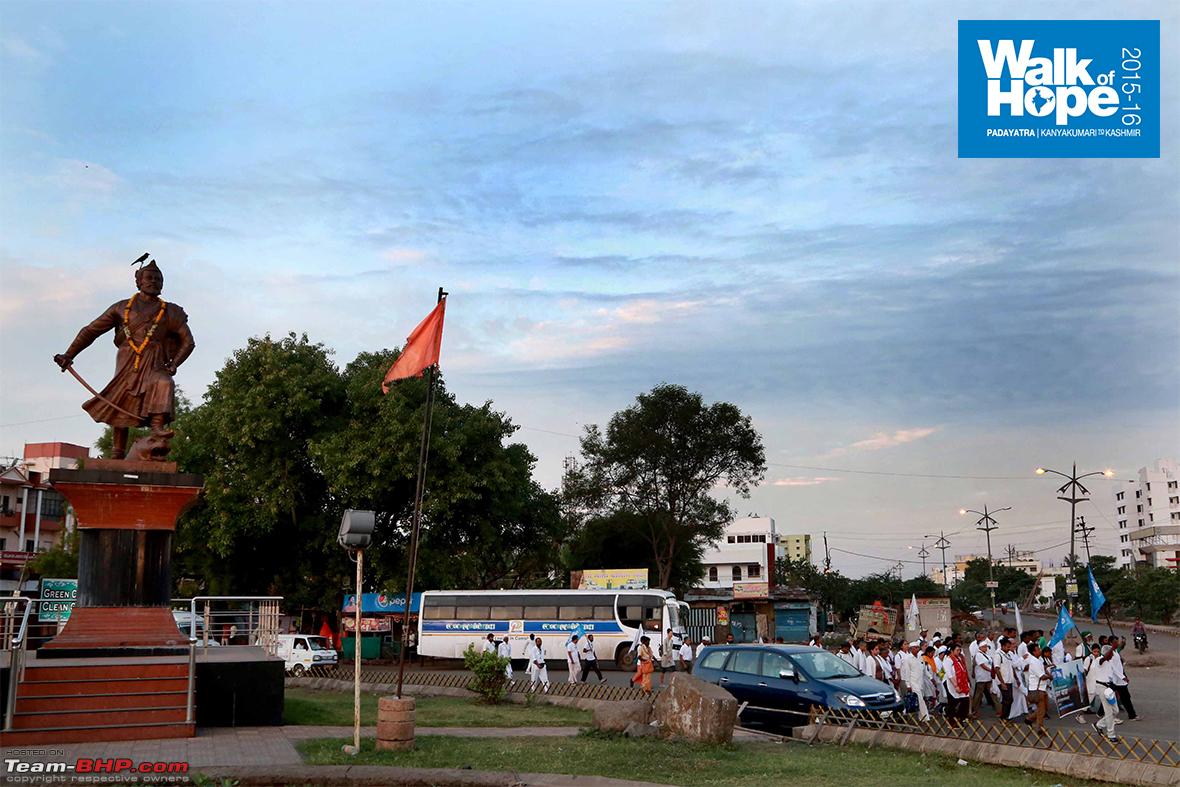
Second was a bathroom van, which was helpful for women who were part of the group and needed to use the bathroom in the middle of nowhere. Or for men who have a serious bout of dysentery.
Third was a "luggage van" which carried our secondary bags because walking 25 kms a day with a 20-kilo backpack strapped to your back is not going to work.
Fourth was a little van which just carried lots of water for refills. Remember, 25 kms a day.
Fifth was a kitchen truck, which was a mobile kitchen and crew. This crew unfailingly cooked breakfast, lunch AND dinner.
Six was an ambulance - a medical assist van which came in pretty useful every now and then.
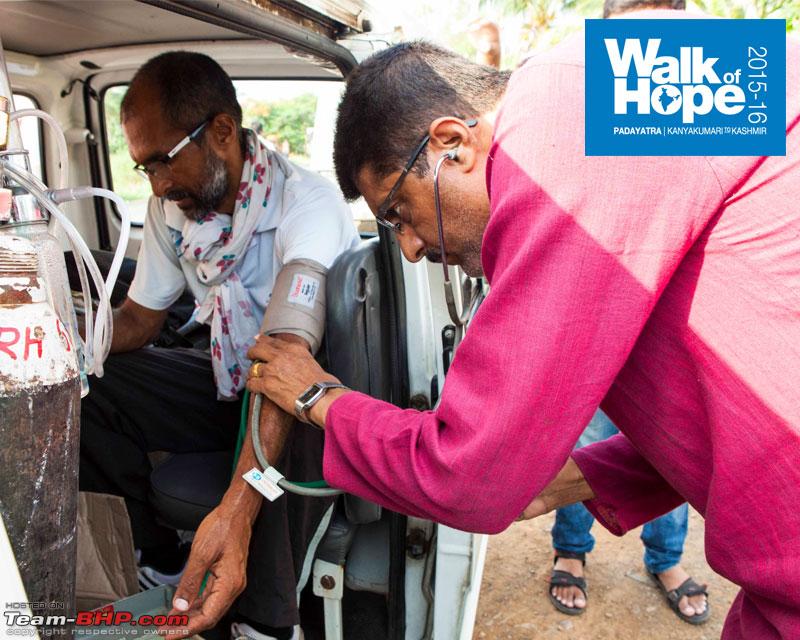
If you ask me, things were reasonably comfortable and well organised. With this kind of backup and support, the only thing that can fail any of us was - our mind or our body. There could be no other excuse.
How every day worked
Phase 1
- The day usually begins very early. About 3 am.
- We almost always stayed together in one big dorm which probably had access to 1-2 toilets at the most.
- Every day, the start time was strict to ensure we finished on time.
- Therefore, the bathrooms were, of course, the hottest commodity first thing in the morning. To get to the start line on time, you had to get out of the bathroom on time.
- So everyone built their own schedules to be up as early as possible to get through the bathroom chores and get to the start. EVERY DAY.


Phase 2
Once we were done, and the stragglers were finished we had to pack our bags and load them into the luggage vans. This took place every single day. We had our mats and sleeping bags which would come out every night and had to be packed in again.
The nomadic life is hard and I was getting a very good taste of it.
After loading the van with our bags, we were finally free of baggage. With just a little backpack on our backs for snacks and some water.
Phase 3
Every morning started with an oath, that for good or for worse I hardly participated in. I was either late or I wasn't interested in crowing some prayer. But that's just me, the other 30 usually had daggers in their eyes when they watched me step away from it. Luckily, I wasn't the only one after a while.
The walk for the day usually begins with about 7-10 kms in the morning before breakfast. So everyone was on an empty stomach unless they had a liking for extremely sweet chai. I didn't and walked on water. Pun intended.
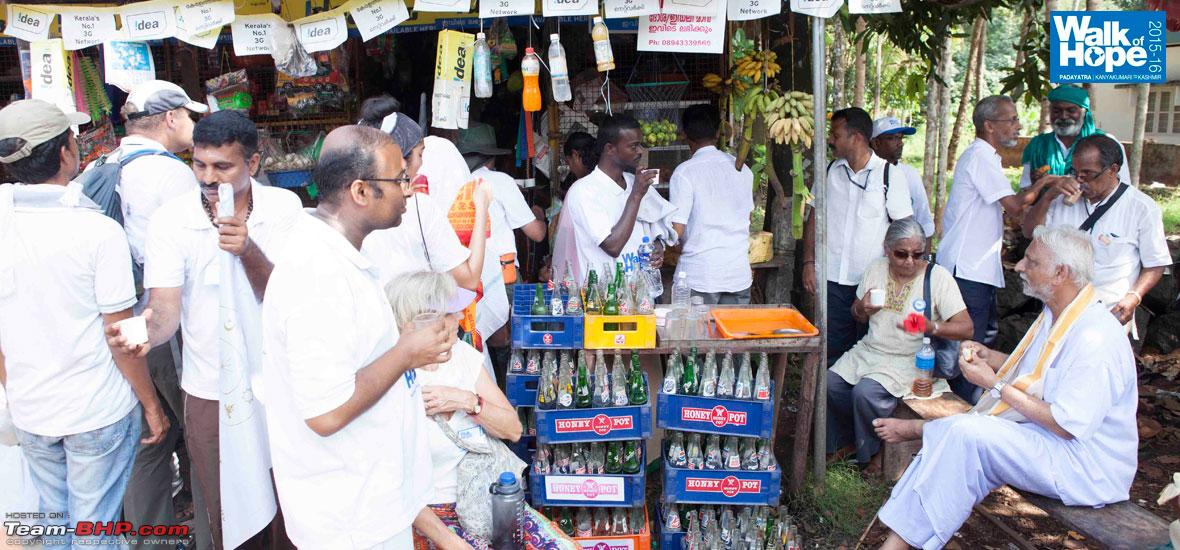
Breakfast is usually a simple affair. Everyone carried their own little plates and spoons to limit plastic waste. People stood in a line and food was on the plates. 30 minutes later a whistle would be heard and that meant we were restarting the walk again.
Phase 4
Probably the toughest, because it's about 10 or 11 am and the sun is climbing up into the sky. If we're not on some monotonous highway with cars and buses screaming away at over 100 kph, we were walking through some tier 2 town with horns screaming away at our poor ears.
This was also around the time when we would meet and greet people who would want to meet us and share experiences. We had many such groups everywhere who would welcome us, and we had to spend time with them.
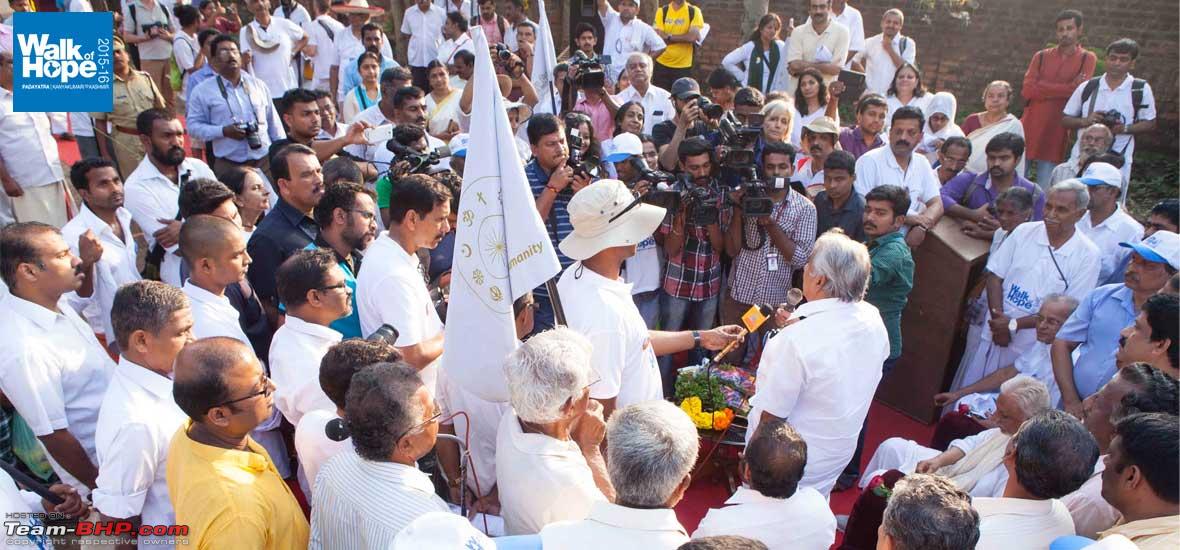


Phase 5
Lunch is done by now, and we continue trudging our weary feet through the hot afternoon sun, but we probably end the day by about 1500. Either we have reached our stay for the night, or the bus comes to fetch us. The next morning the bus would drop us back at the exact spot from where we were picked up to continue with the walking.
The luggage would come off the van again, and so would our mats and sleeping bags. We didn't have a laundry van with us, so everyone did their own by hand. This had to be done almost every day - I was even carrying rope and a few clips. Clothes into a bucket of shampoo and water, rinse, out to drip dry, and ready to go the next morning. I carried two sets of walking clothes which would switch every day. A couple of pairs of underwear, a few tees for the evening and a pair of shorts.
Nights usually fell early, but I would spend most evenings walking around and exploring where we stopped to camp. This was fun, and I daresay was when my love for walking alone began.
Continue reading about Red Liner's experience for BHPian comments, insights and more information.
- Tags:
- Indian
- Member Content
- Travelogue




